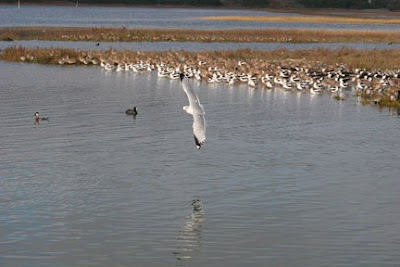
Photo by Stephen Osmon, Los Angeles Times

We wrote about the incredibly rare Death Valley pupfish last year, after we saw them in their tiny Devils Hole habitat in Nevada. Now the New York Times and the Los Angeles Times report that the fall count of the pupfish shows an increase in population. The pupfish, an isolated species whose numbers were down as low as 38 in 2006, now number 126. They numbered close to 500 as recently as the mid-1990s.
The counts are done in spring and fall; spring counts are typically much smaller than fall because the pupfish have a greater die off in the winter months. They are counted in the shallow rock shelf where the majority of them feed and spawn, and by divers who reach the 100 foot depths where others may swim. They are counted twice a day, and the numbers averaged for a total population figure
Biologists are not sure why the species has dwindled so precipitously since then, but suspect that a lack of nutrients is to blame. To remedy the situation, they took the highly unusual step of developing a specialized, high-nutrient fish food similar to food used to feed minnow at a New Mexico hatchery.
"It was not done lightly," Bob Williams, Nevada field supervisor for the U.S. Fish and Wildlife Service, told the L.A. Times. "When you start to artificially augment a wild population, it is a sign the species is really in trouble."
Click here for more information on the Amargosa Valley pupfish station or the pupfish home page at http://www.fws.gov/Nevada/protected_species/fish/species/dhp/dhp.html.


































